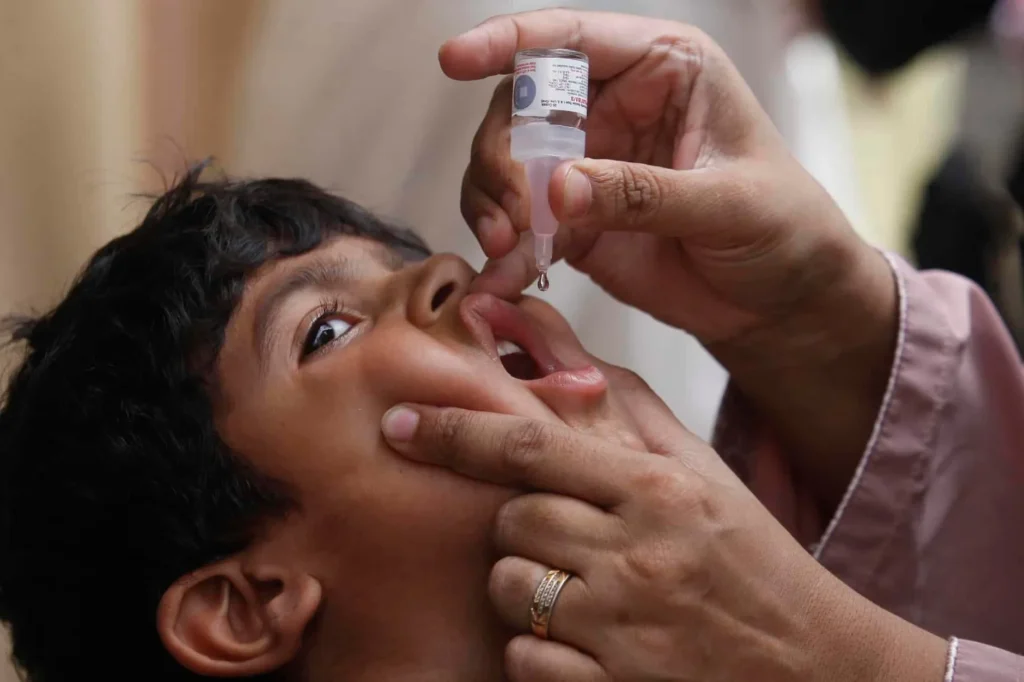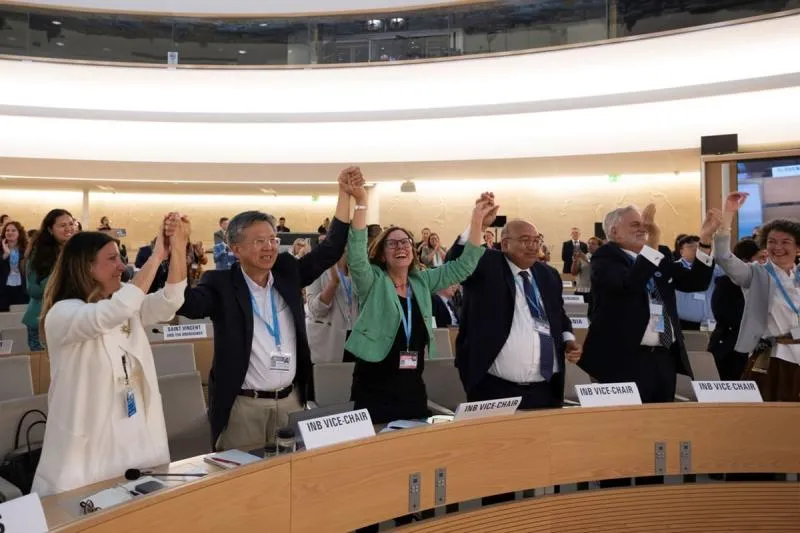As the global health community convened at the 77th World Health Assembly (WHA) in Geneva in May 2025, one message echoed through plenary halls and breakout rooms alike: Immunization is at a critical crossroads. With the momentum of pandemic-era vaccine breakthroughs fading and global routine immunization rates plateauing, leaders and delegates were forced to confront the reality that millions of children and adults are once again vulnerable to preventable diseases.
The summit, which brought together representatives from 194 countries, policymakers, health ministers, and key organizations like the World Health Organization (WHO), UNICEF, and Gavi, the Vaccine Alliance, became a pivotal moment to assess global immunization strategies, highlight disparities, and redefine the path forward.
The Current State of Global Immunization
According to WHO’s latest estimates presented at the WHA, over 25 million children missed routine vaccinations in 2023 alone—a setback that wiped out nearly a decade of progress. The most significant gaps are concentrated in low-income regions, particularly in sub-Saharan Africa, conflict zones, and marginalized communities with poor healthcare access.
While immunization programs rapidly expanded during COVID-19—spearheaded by the development and distribution of mRNA vaccines—the infrastructure for childhood vaccinations, HPV vaccines, and disease eradication programs (like those targeting measles and polio) has struggled to recover.

Key Challenges Discussed at the WHA Summit
1. Post-Pandemic Complacency
Global complacency has become deadly, according to health experts. The urgency seen during the COVID-19 pandemic has dissipated, replaced by fragmented public health efforts and donor fatigue.
2. Vaccine Misinformation
The infodemic—misinformation around vaccine safety and efficacy—remains a significant threat. Countries like the U.S., France, and Brazil are seeing spikes in vaccine hesitancy fueled by social media conspiracy theories, eroding trust in public health systems.
3. Supply Chain Gaps
Although vaccine manufacturing capacity has improved, logistical weaknesses—particularly cold-chain transportation, last-mile delivery, and data tracking—continue to hamper distribution in developing nations.
4. Inequity in Access
Vaccine access remains grossly unequal. Wealthy nations continue to have high coverage rates, while low-income countries often rely on inconsistent aid programs, leaving millions unprotected.
5. Re-emergence of Preventable Diseases
Measles, diphtheria, and polio are resurging in areas with low vaccination coverage. In 2024 alone, more than 30 countries reported measles outbreaks, many of which occurred in areas that had been previously declared measles-free.

New Goals and Strategies Unveiled
Recognizing the need for a course correction, the World Health Assembly introduced a new global immunization framework: “Immunize 2030 Reboot”, an enhanced vision building on the earlier Immunization Agenda 2030 (IA2030). It focuses on four critical pillars:
1. Rebuilding Trust
Governments and health agencies are tasked with countering misinformation by engaging communities more directly, using trusted local leaders, influencers, and healthcare workers to spread evidence-based messages.
2. Digital Immunization Records
WHA pushed for the global rollout of digital vaccine passports and child immunization tracking systems. These tech-based approaches will help countries monitor gaps, alert families, and forecast vaccine demand more accurately.
3. Sustainable Funding Models
Calls were made to expand domestic investment in immunization programs, decreasing reliance on international aid. The World Bank pledged new low-interest financing packages for health infrastructure in fragile states.
4. Pandemic Preparedness Integration
Delegates emphasized the need to build immunization into pandemic preparedness, ensuring countries maintain mass-vaccination capabilities that can quickly pivot to respond to new threats, like avian influenza or another coronavirus outbreak.
Voices from the Front Lines
The summit highlighted firsthand accounts from field workers, showcasing both successes and struggles.
- Dr. Aminatou Sylla, a Senegalese pediatrician, explained how mobile vaccination units in rural villages have helped bridge access gaps, but warned that fuel costs and staff shortages limit their reach.
- Carlos Mendes, a community organizer from Brazil’s Amazon region, detailed how indigenous populations remain deeply suspicious of vaccines, and how cultural sensitivity and peer education have become essential tools for outreach.
- In war-torn Sudan, doctors described smuggling vaccine vials across dangerous zones, where conflict and political instability have decimated public health programs.
These testimonials underscored that immunization is more than a technical issue—it’s a societal, political, and ethical one.
Major Commitments and Announcements
Several countries and organizations made bold commitments during the WHA:
- India promised to start new programs against HPV and rubella and to completely automate its Universal Immunization Programme (UIP) by 2027.
- Gavi announced a new $2.1 billion fund to support vaccine catch-up programs for 30 priority countries affected by COVID-era disruptions.
- In order to track adverse responses, increase transparency, and combat safety-related misinformation, WHO introduced the Global Vaccine Safety Network 2.0, a real-time reporting system.
- The African Union proposed a continental vaccine manufacturing hub based in Nigeria, with support from South Africa and Egypt, aimed at reducing reliance on imports.
Youth and Civil Society Take the Stage
One of the most impactful moments of the summit came when youth health advocates and civil society organizations challenged global leaders to commit not just to promises but to measurable action.
Organizations like YVAX (Youth for Vaccine Access) and Shot@Life presented data showing that more than half of the world’s unvaccinated children live in just 10 countries, many of which lack both political will and funding for basic immunization services.
In an emotional speech, 19-year-old Maria Kumari, a health worker from Nepal, said:
“It is not enough to talk about vaccines in rooms full of suits. We need clinics, roads, trained staff, and clean syringes. We require leaders who recognize that immunity is a right, not a privilege.
Private Sector’s Role in the Next Phase
The private sector was not left out of the conversation. Biotech companies like Moderna, BioNTech, and Serum Institute of India presented their next-generation vaccine platforms, including:
- mRNA-based vaccines for malaria and HIV (currently in Phase 3 trials)
- Thermostable vaccines that do not require refrigeration
- Micro-needle patch delivery systems for painless, self-administered immunization
Tech companies like Google Health and Apple discussed tools to help with health data tracking, vaccine reminders, and AI-based forecasting of outbreak trends.
Looking Ahead: The Next 5 Years
As the WHA summit concluded, one message was clear: if the world fails to act now, the progress of the last half-century could unravel. Immunization has saved millions of lives, but it cannot be taken for granted.
The next five years are critical to:
- Restoring pre-pandemic coverage rates
- Eliminating vaccine-preventable diseases like polio and measles
- Investing in health system resilience
The “Immunize 2030 Reboot” roadmap gives countries a blueprint—but success will require funding, political will, and, above all, community trust.
Related Blog: U.S. Launches Ambitious “MAHA” Wearable Health Campaign
Conclusion: A Turning Point for Global Immunization
Grappling with misinformation, funding shortages, and logistical hurdles, the world stands at a tipping point. The WHA 2025 has made it clear that vaccines alone don’t save lives—vaccination programs do. It’s time to move beyond lofty declarations and into grounded, equitable action.
As delegates return to their nations, the challenge is now to transform promises into policy, goals into grassroots campaigns, and innovation into immunization.
The crossroads is here. Which direction the world takes will determine whether vaccination remains one of humanity’s greatest public health triumphs—or becomes its most sobering missed opportunity
Frequently Asked Questions (FAQs)
Q1: What was the main focus of the 2025 World Health Assembly regarding immunization?
A: The summit emphasized revitalizing global immunization efforts after pandemic-related setbacks, with a focus on addressing vaccine equity, misinformation, and infrastructure gaps through a renewed strategy called “Immunize 2030 Reboot.”
Q2: Why is immunization considered at a crossroads in 2025?
A: Immunization is facing stagnating coverage rates, growing vaccine hesitancy, supply chain issues, and the resurgence of preventable diseases like measles and polio, putting decades of progress at risk.
Q3: What is the “Immunize 2030 Reboot” strategy?
A: It’s a revamped global initiative launched at the summit, focusing on rebuilding public trust, introducing digital tracking systems, strengthening funding models, and integrating immunization into broader pandemic preparedness.
Q4: Which diseases are re-emerging due to declining vaccination rates?
A: Diseases like measles, diphtheria, and polio have seen renewed outbreaks, especially in regions with poor vaccination coverage or disrupted health systems.




